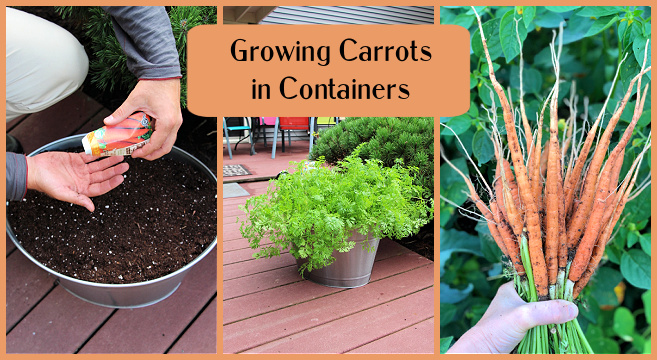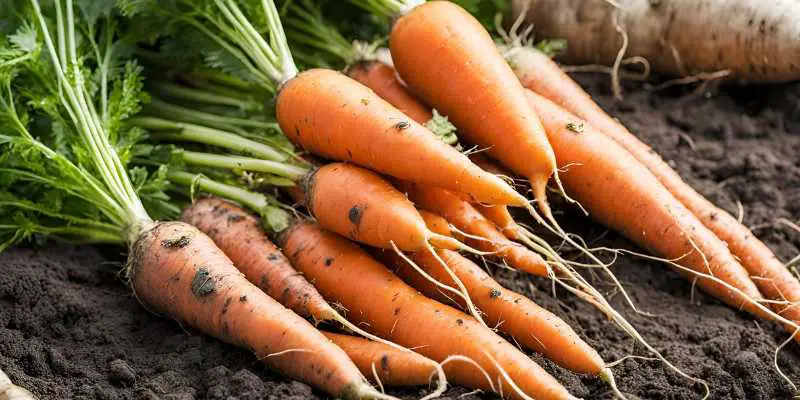Planting carrots can be a rewarding experience. It’s also easier than you might think.
Carrots are a popular root vegetable, known for their sweet taste and crunch. Growing them in your garden can be both fun and beneficial. This guide will show you the best way to plant carrots, ensuring a bountiful harvest. From soil preparation to choosing the right variety, each step is crucial.
Whether you’re a beginner or an experienced gardener, these tips will help you achieve the best results. So, get ready to enjoy fresh, home-grown carrots straight from your garden. Happy planting!
Choosing The Right Carrot Varieties
There are many types of carrots to choose from. Nantes carrots are sweet and grow well in many soils. Danvers carrots are strong and good for heavy soil. Chantenay carrots are short and thick, perfect for clay soil. Imperator carrots are long and thin, often found in stores. Each type has its own special qualities.
Carrots grow best in cool weather. Spring and fall are the best times to plant. Hot weather can make carrots taste bitter. Frost can harm young plants. Choose a variety that fits your climate. Cooler regions may need different types than warmer areas. Always check your local weather and soil.

Credit: www.youtube.com
Preparing The Soil
Loosen the soil to a depth of 12 inches before planting carrots. Remove stones and clumps for smooth growth. Mix in compost to enrich the soil.
Soil Testing
Testing the soil helps you know its pH level. Carrots grow best in loamy soil with a pH of 6.0 to 6.8. Use a soil test kit to check this. Check for nutrients like nitrogen, phosphorus, and potassium. Good soil means healthy carrots. Test your soil before planting. This way, you can make any needed changes.
Amending The Soil
Amending the soil improves its quality. Add organic matter like compost or aged manure. This makes the soil rich and loose. Loose soil helps carrot roots grow straight. Remove rocks and clumps from the soil. Rocks can cause carrots to grow crooked. Keep the soil moist but not wet. Too much water can harm the plants.
Planting Carrot Seeds
Carrot seeds need space to grow. Plant the seeds 1 inch apart. This gives them room to grow roots. Crowded seeds will not grow well. Thin the seedlings to 2 inches apart later.
Plant carrot seeds at the right depth. The seeds should be 1/4 inch deep. Too deep, and they may not sprout. Too shallow, and they may dry out. Cover them lightly with soil. Water gently to keep the soil moist.
Watering Techniques
Carrots need water to grow well. Water them two to three times a week. If the soil feels dry, water them more. Do not let the soil stay dry for too long. Young carrots need more water.
Water the carrots deeply. This helps the roots grow strong. Use about one inch of water each time. Check the soil with your finger. If it is moist, you have watered enough. Do not overwater. Too much water can harm the carrots.
Thinning Seedlings
Thinning seedlings ensures healthy carrot growth. Space them 2-3 inches apart for best results. This allows each carrot room to develop fully.
When To Thin
Carrot seedlings need thinning after they sprout. Thin them when they are two inches tall. This usually takes 2-3 weeks. Ensure they are not too close. Space them 2 inches apart. This helps them grow big and strong.
Proper Method
Always use your fingers to thin seedlings. Be gentle to avoid damaging roots. Pull out the extra seedlings. Leave the strongest ones. Water the soil after thinning. This helps the remaining seedlings settle in.

Credit: 8billiontrees.com
Pest And Disease Management
Carrots often face problems from pests like carrot rust flies, aphids, and root-knot nematodes. These pests can harm the plants. Watch out for yellow or stunted leaves. This may mean pests are present. Regularly check your garden. Quick action can help save your carrots.
Rotate crops every year. This helps prevent pests from coming back. Use row covers to keep pests away. Plant companion plants like onions or garlic. They can help repel pests. Keep the garden clean. Remove weeds and old plant debris. This reduces hiding spots for pests. Water plants at the base. Wet leaves can attract pests and diseases.
Fertilizing Carrots
Carrots grow best with balanced fertilizers. Look for ones with equal parts nitrogen, phosphorus, and potassium. Organic options work well. Consider compost or well-rotted manure.
Apply fertilizer before planting. Mix it into the soil. This helps roots get nutrients quickly. Another application is useful when plants are a few inches tall. Be careful not to over-fertilize. Too much can harm the plants.
Harvesting Carrots
Plant carrot seeds in loose, sandy soil for best results. Ensure consistent watering and thin seedlings to avoid crowding. Harvest when tops are bright green.
Signs Of Readiness
Carrots are ready to harvest when their tops show above the soil. The tops should be about 1/2 inch in diameter. The color of the carrot tops should be bright. Check the size by gently pulling one carrot. If it looks good, it’s time to harvest.
Harvesting Techniques
Use a garden fork to loosen the soil around the carrots. Be careful not to damage them. Gently pull the carrots from the ground. Shake off the dirt. Wash them with water to remove any remaining soil. Store the carrots in a cool, dry place. This will keep them fresh for a longer time.
Storing And Preserving Carrots
Keep carrots fresh by placing them in the fridge. Use a plastic bag with small holes. This helps air flow. Remove the greens first. They take away moisture. Carrots stay fresh for 2 weeks this way.
Freeze carrots to store them long-term. First, wash and peel them. Cut into small pieces. Boil for two minutes. Then, cool in ice water. Dry and pack in a freezer bag. Carrots last up to a year.

Credit: savvygardening.com
Frequently Asked Questions
What Is The Best Time To Plant Carrots?
The best time to plant carrots is in early spring. They need cool weather to grow. You can also plant them in late summer for a fall harvest.
How Deep Should I Plant Carrot Seeds?
Plant carrot seeds about 1/4 inch deep. Cover them lightly with soil. Keep the soil moist until the seeds germinate.
How Often Should I Water Carrot Plants?
Water carrot plants once a week. Ensure the soil remains moist but not waterlogged. Consistent moisture helps carrots grow well.
What Type Of Soil Is Best For Carrots?
Loose, well-drained soil is best for carrots. Avoid heavy, clay soils. Sandy or loamy soils work great for carrot growth.
Conclusion
Planting carrots can be simple and rewarding with the right steps. Ensure you choose loose soil for easy root growth. Water consistently, but avoid overwatering. Thin seedlings to give each plant space. Watch for pests and protect your crop. Harvest when carrots reach the desired size.
Enjoy your fresh, home-grown carrots. Happy gardening!

My mission is to help you bring the beauty of nature indoors with expert advice, detailed plant care guides, and creative design ideas.





Leave a Reply